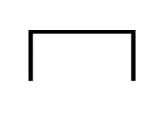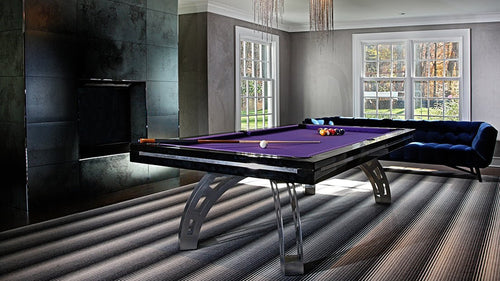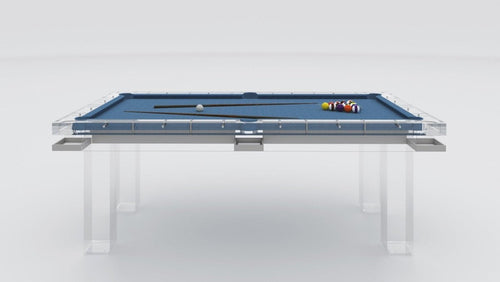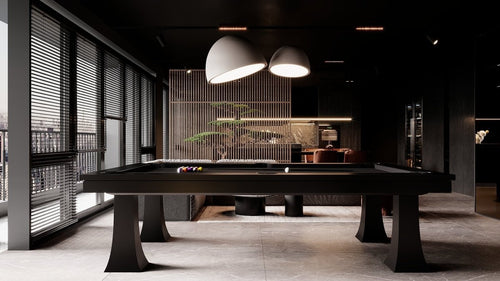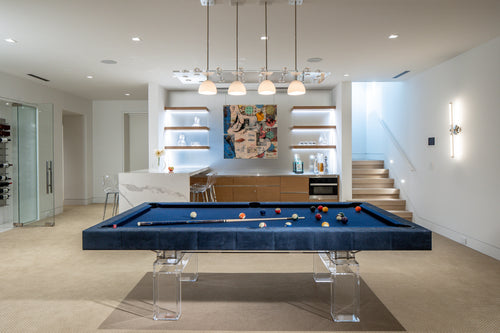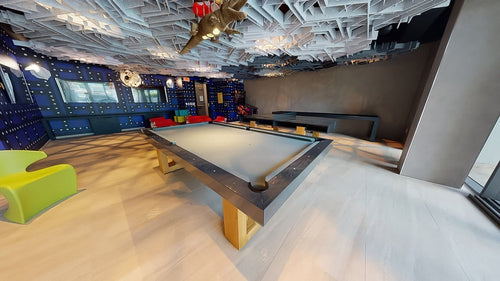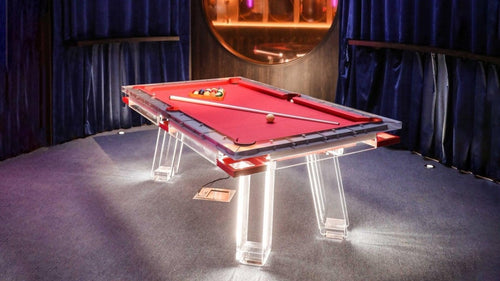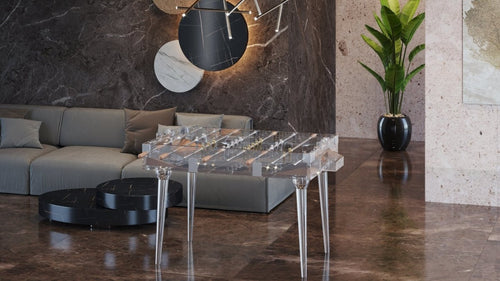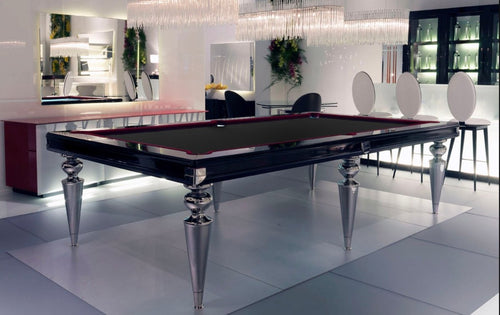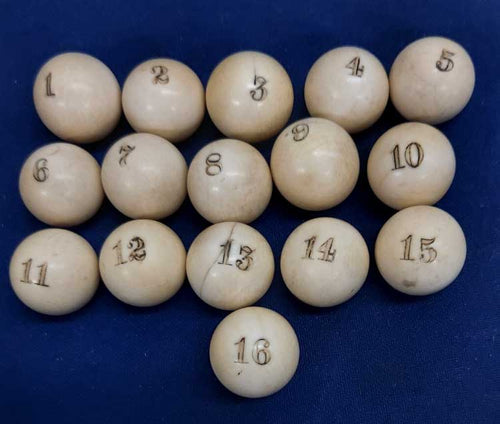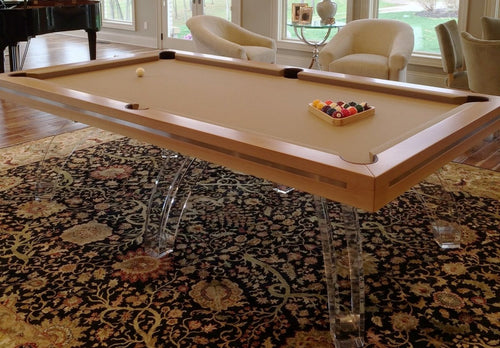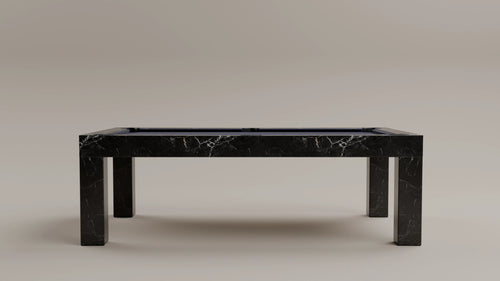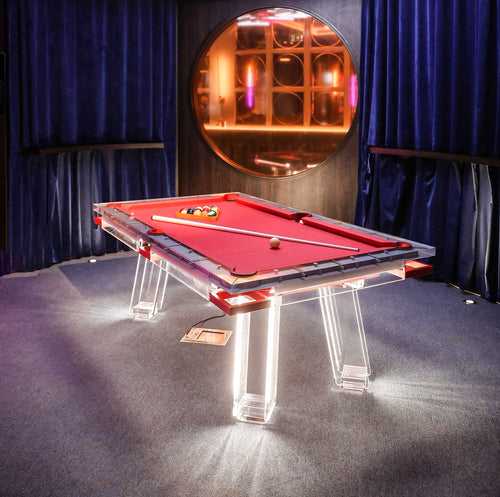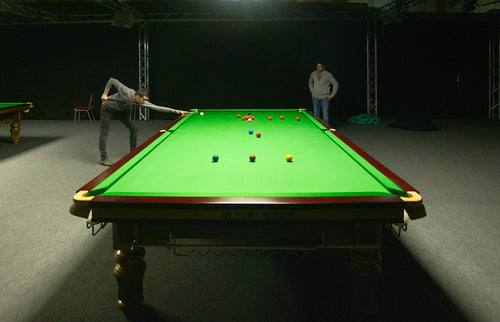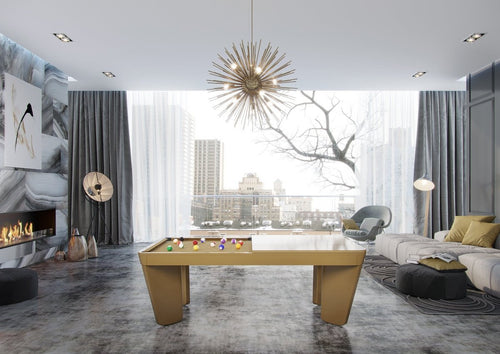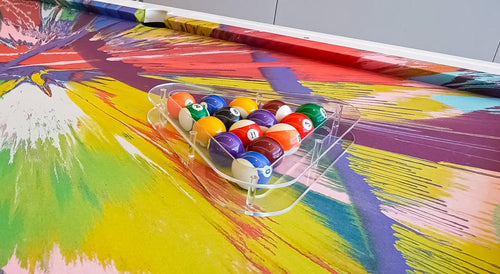Enjoy our modern designs
Understanding Pool Table Sizes

Pool tables come in various sizes, each catering to different settings and player preferences. While the overall dimensions of a pool table are crucial, the playing surface area (where the game is actually played) is equally important. Understanding both will help you determine the best fit for your space and gameplay needs.
Why Measuring Matters
- Space Planning: Ensure the table fits comfortably in your room with enough space for players to move and take shots.
- Gameplay Quality: Accurate measurements affect the playability and comfort during games.
- Maintenance and Repairs: Knowing the exact size helps in sourcing appropriate replacement parts like cushions or felt.
For more detailed information on table sizes, please refer to this comprehensive article.
Essential Tools You'll Need

Before you begin measuring, gather the following tools to ensure accuracy and efficiency:
- Tape Measure: A retractable steel tape measure is ideal for precision.
- Notebook and Pen: To jot down your measurements and calculations.
- Level: To ensure your table is perfectly flat, which is crucial for fair play.
- Calculator: Useful for doubling measurements and quick calculations.
Step-by-Step Guide to Measuring Your Pool Table
Follow these detailed steps to accurately measure your pool table's playing surface and overall dimensions.
Step 1: Prepare Your Pool Table
- Clear the Table: Remove all balls, cues, and accessories to have an unobstructed view of the playing surface.
- Level the Table: Use a level to check if the table is even. Adjust the legs if necessary to prevent measurement inaccuracies.
Step 2: Measure the Playing Surface
- Identify the Cushions: The cushion noses are the padded edges surrounding the table where the balls bounce off.
-
Measure the Width:
- Place your tape measure at the center of one short end cushion.
- Extend the tape straight across to the center of the opposite short end cushion.
- Note: Measure at the top of the cushion where the ball makes contact, not underneath.
-
Measure the Length:
- Similarly, measure from the center of one long end cushion to the center of the opposite long end cushion.
- Alternatively, you can double the width measurement to estimate the length, as pool tables typically have a length that is twice their width.
- Example: If your measurement is 44 inches wide, double this for the length to get 88 inches long. This indicates an 8-foot pool table.
Step 3: Calculate the Overall Dimensions
-
Overall Width and Length:
- The overall dimensions include the table's body and the cushions.
- Measure from the outer edges of the cushions on both short sides to get the total width.
- Do the same for the long sides to determine the total length.
-
Height Measurement:
- Measure from the floor to the top of the playing surface to ensure the table is at a comfortable height for players.
Step 4: Confirm Your Measurements
- Double-Check: Re-measure the width and length to ensure consistency.
- Compare with Standard Sizes: Refer to standard pool table sizes to categorize your table accurately.
Common Pool Table Sizes Explained
Understanding standard pool table sizes can help you quickly identify your table's category based on your measurements.
| Table Type | Playing Surface (Width x Length) | Overall Dimensions | Typical Use |
|---|---|---|---|
| 6-Foot | 27" x 54" | ~35" x 63" | Home use, compact spaces |
| 7-Foot | 39" x 78" | ~47" x 83" | Bars, pool halls, casual playrooms |
| 8-Foot | 44" x 88" | ~52" x 98" | Standard home and commercial tables |
| Pro 8-Foot | 46" x 92" | ~54" x 102" | Antique tables, specialized venues |
| 9-Foot | 50" x 100" | ~56" x 108" | Tournament and professional play |
Note: Minor variations may occur based on cushion type and felt size.
Tips for Accurate Measurements
To ensure your measurements are precise and reliable, keep the following tips in mind:
- Use a Reliable Tape Measure: A high-quality, retractable steel tape is less likely to stretch or kink.
- Measure at Ball Contact Points: Always measure at the points where the balls touch the cushions to get the most accurate playing surface dimensions.
- Avoid Measuring Through Cushions: Cushions can vary in thickness; measuring directly through them can lead to inaccuracies.
- Check for Levelness: An uneven table can skew your measurements. Ensure the table is level before measuring.
- Measure Multiple Times: Take measurements at least twice to confirm consistency.
- Consider Table Accessories: Extras like side pockets or additional rails can affect overall dimensions.
Frequently Asked Questions (FAQs)
1. Why is the playing surface smaller than the overall table size?
The playing surface excludes the space taken up by cushions and rails. This area is reserved for the balls to bounce off, ensuring smooth gameplay.
2. Can I use this measuring method for Snooker Tables?
Yes, the same principles apply. However, Snooker tables are typically larger, often extending up to 12 feet in length.
3. How much space should I allocate around the table for comfortable play?
A general rule is to have at least 5 feet of clearance around all sides of the table. This space allows players to maneuver cues without obstruction.
4. What if my measurements don't match standard sizes exactly?
Manufacturers may have slight variations. Choose the closest standard size based on your measurements. For example, if your table measures 43" x 87", it's closest to an 8-foot table.
5. Do different cushion types affect the table size?
Yes, varying cushion thickness can slightly alter measurements. Always measure at the ball contact points to account for these differences.
Conclusion
By following the steps outlined in this guide, you can confidently determine your pool table's size and make informed decisions about placement, upgrades, or repairs.
Remember, precision is key. Take your time, double-check your measurements, and refer to standard-size charts to categorize your table correctly. Whether you're a casual player or a serious enthusiast, having the right pool table size will enhance your gaming experience and elevate your space.

